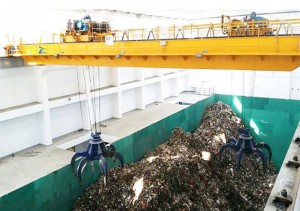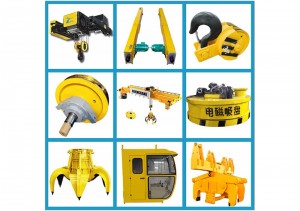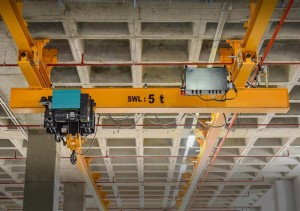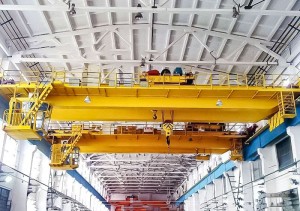
Suspension Type Underhung Bridge Crane for Workshop Use
Product Details and Features
Underhung overhead cranes, also known as under-running or underslung cranes, are a type of overhead crane system that is suspended from the building structure above. They are commonly used in industrial settings where floor space is limited or where there are obstacles on the floor that would interfere with the operation of traditional overhead cranes. Here are some of the product details and features of underhung overhead cranes:
Design and Construction: Underhung overhead cranes are typically designed with a single girder configuration, although double girder designs are also available. The crane is suspended from the building structure using end trucks that run on a runway beam attached to the building supports. The crane travels along the runway beam, allowing for horizontal movement of the load.
Load Capacity: Underhung overhead cranes are available in various load capacities to suit different application requirements. The load capacity can range from a few hundred kilograms to several tons, depending on the specific model and design.
Span and Runway Length: The span of an underhung crane refers to the distance between the runway beams, and it can vary depending on the specific requirements of the application. Similarly, the runway length is determined by the available space and the desired coverage area.
Application
Underhung overhead cranes are widely used in various industrial applications where efficient material handling and space optimization are crucial. Some common applications for underhung overhead cranes include:
Manufacturing Facilities: Underhung cranes are commonly used in manufacturing plants for tasks such as moving raw materials, components, and finished products along assembly lines. They can also be utilized for loading and unloading machines, transferring goods between workstations, and facilitating general material handling within the facility.
Warehouses and Distribution Centers: Underhung cranes are well-suited for warehouse and distribution center operations. They can efficiently move and position goods within the facility, including loading and unloading trucks and containers, organizing inventory, and transporting items to and from storage areas.
Automotive Industry: Underhung cranes find extensive use in the automotive industry, where they are employed in assembly lines, body shops, and paint booths. They assist in the movement of car bodies, parts, and equipment, enhancing productivity and streamlining production processes.







Product Process
Load Capacity and Overload Protection: It is crucial to ensure that the underhung crane is not overloaded beyond its rated capacity. Overloading can lead to structural failures or crane instability. Always adhere to the load capacity limits specified by the manufacturer. Additionally, underhung cranes should be equipped with overload protection systems, such as load limiters or load cells, to prevent overloading.
Proper Training and Certification: Only trained and certified operators should operate underhung cranes. Operators should be familiar with the specific crane model, its controls, and the safety procedures. Proper training helps ensure safe operation, load handling, and awareness of potential hazards.
Inspection and Maintenance: Regular inspection and maintenance of underhung cranes are essential for identifying and addressing any mechanical issues or wear and tear. Inspections should include checking the condition of the runway beams, end trucks, hoist mechanisms, electrical systems, and safety features. Any defects or abnormalities should be promptly repaired or addressed by qualified personnel.














